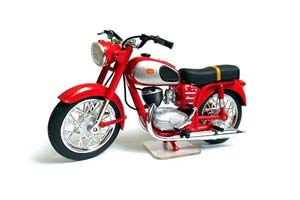
PANNONIA Motorcycle PDF Manuals
History of Pannonia Motorcycles
Above on the page there are several PDF Manuals for PANNONIA Motorcycles.
The history of the creation of the Pannonia motorcycle dates back to the distant 1947, when the Hungarian Csepel machine-building plant begins to produce an exact copy of the German DKW 125 RT.
The motorcycle got its name from the name of the plant.
It was 1954. The TL-250 rolls off the assembly line. Two years later, as a result of rebranding, the motorcycles of the Budapest plant are produced under the Pannonia brand.
The TL 250 had a single-cylinder, two-stroke, 250 cc engine with 11 horsepower, a pendulum rear-wheel suspension system and brake drums that were wide across the hub.
Up to 1959, improved TLT and TLF models were produced.
The upgrades concerned the engine, which became more powerful, as well as the saddle, which became more comfortable.
The disadvantages of the Pannonia TLT are the lack of a hydraulic shock absorber system for the front fork. It seems to be like a trifle, but some discomfort when driving on a dirt surface spoiled the nerves.
The second drawback was the outdated Magdina ignition system, which was not entirely reliable. While new, it’s good, and then there’s no spark, then it won’t start.
It is worth mentioning the impressive appearance of the Pannonia, which was distinguished by such details as chrome wheels, exhaust pipes and mufflers, headlight contour, well-polished aluminum engine parts.
The limited version of the Pannonia 250 was a De Luxe modification.
The chrome-plated gas tank and hoods between the engine and rear wheel made this model even more elegant from an aesthetic point of view.
The motorcycle provided for the use of a side trailer.
It was believed that a motorcycle with an engine capacity of at least 350 cc was needed to use the sidecar.
The designers solved this problem by making the stroller lighter by using aluminum materials in its manufacture.
Many advantages could not outweigh the rapid technological progress, so motorcycles were corny outdated.
A new breath of freshness for the fans of the Hungarian concern was the release of a Yamaha licensed motorcycle called Pannonia P-20.
Due to the high cost of products, the main importer of Pannonia, the Soviet Union, refuses to bulk purchase new, more complex and expensive models.
This led to a huge sales problem, which ultimately led to the discontinuation of the production of motorcycles by the Csepel plant and the transition to the production of bicycles, which were much more in demand at that time.


